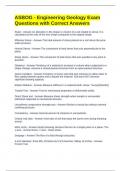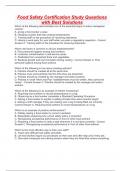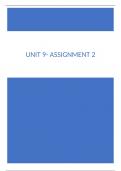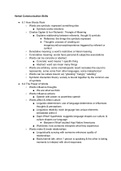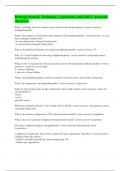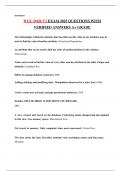Examen
ASBOG - Engineering Geology Exam Questions with Correct Answers
- Cours
- Établissement
Strain - Answer-An alteration in the shape or volume of a soil related to stress. It is calculated as the ratio of the new shape compared to the original shape Effective Stress - Answer-The total amount of stress placed on a soil minus the pore-water pressure Normal Stress - Answer-The compon...
[Montrer plus]
